Exploring the Diverse Applications of Robotics
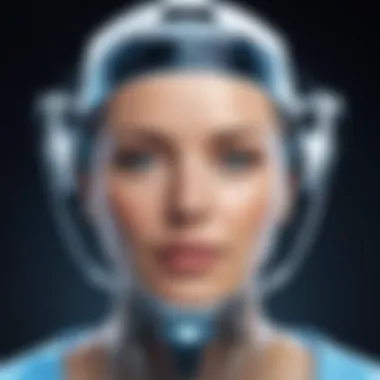
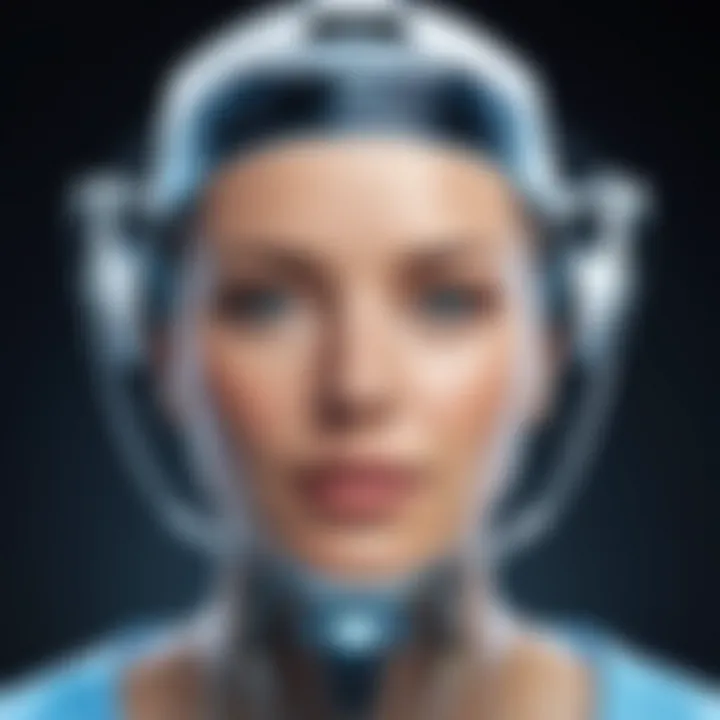
Intro
The realm of robotics has transformed drastically over recent years. It now spans various fields, each exhibiting unique applications and benefits. This shift is not merely technological; it reflects a change in how industries operate and solve complex challenges.
From automating repetitive tasks in manufacturing to enhancing precision in healthcare, the impact of robotics is multifaceted. This article aims to dissect these applications, revealing the intricate mechanisms behind them and their implications for future developments.
Organizations are increasingly contemplating robotics to optimize performance. This exploration will synthesize insights that are critical for decision-makers, IT professionals, and entrepreneurs. Understanding the nuances of robotics offers essential perspective on how technology can be utilized strategically.
Software Category Overview
Definition and Importance
In the context of robotics, software plays a crucial role. It serves as the brain behind the mechanical components, guiding actions and tasks. The software defined for robotics encompasses algorithms, control systems, and user interfaces that enable robotic systems to function autonomously or semi-autonomously.
The importance of robotics software cannot be overstated. It streamlines operations, enhances reliability, and reduces human error. As robotics becomes more integrated into various sectors, understanding this software category is vital.
Key Characteristics
Several key characteristics define effective robotics software:
- Modularity: Allows components to be reused and adapted for different tasks.
- Scalability: The software can grow and evolve as the needs of an organization change.
- Interoperability: Ability to work seamlessly with other systems, enhancing overall functionality.
- User-Friendly Interfaces: Critical for operators to engage efficiently with robotic systems.
- Robustness: The software must perform reliably under various conditions.
These characteristics ensure that robotics software is not only effective but also adaptable to an ever-evolving technological landscape.
"The seamless integration of advanced software in robotics is what sets apart the ordinary from the extraordinary in operational efficiency."
Comparative Analysis of Top Software Options
When analyzing the landscape of robotics software, it is useful to consider specific examples. For instance, one can look at tools like Robot Operating System (ROS), V-REP, and MATLAB. Each of these tools comes with distinct features tailored to varying applications in robotics.
Feature Comparison
- Robot Operating System (ROS):
- V-REP:
- MATLAB:
- Open-source framework.
- Extensive library of tools and packages.
- High customization potential.
- Advanced simulation capabilities.
- Multi-robot support.
- Comprehensive real-time testing features.
- Strong analytic capabilities for algorithm development.
- Integration with hardware for real-world applications.
- Visual programming options available.
With different offerings, the choice of software depends on specific project requirements, including budget, complexity, and intended application.
Pricing Models
Pricing models vary among robotics software:
- Open Source: Available at no cost but may require investment in technical support.
- Subscription-Based: Monthly or annual fees, often providing continuous updates and support.
- One-Time Purchase: Upfront cost with potential extra fees for updates or support.
Careful evaluation of these models is necessary for organizations aiming to integrate robotics into their processes effectively.
Foreword to Robotics
The field of robotics has gained significant attention in recent years. Its relevance is not only tied to technological advancement but also to its transformative effect on various industries. Understanding robotics is essential for decision-makers, IT professionals, and entrepreneurs who seek to incorporate these technologies into their operations.
Robotics encompasses the design, construction, operation, and use of robots. Often, these machines perform tasks that are repetitive, dangerous, or require precision beyond human capability. The benefits of employing robots include increased efficiency, enhanced safety, and improved quality of work. As industries evolve, the importance of integrating robotics will only grow.
Defining Robotics
Robotics is an interdisciplinary branch of engineering and science that focuses on creating robots. These robots can be programmed to complete specific tasks, ranging from simple actions to complex decision-making. The field combines knowledge from various domains such as mechanical engineering, electrical engineering, computer science, and artificial intelligence.
A robot typically consists of three main components: sensors, actuators, and a control system. Sensors are responsible for gathering input from the environment. Actuators perform the actions based on the input received. Meanwhile, the control system processes this information, determining how the robot should respond. The integration of these components allows robots to perform autonomously, making them highly versatile across multiple applications.
Brief History of Robotics
The history of robotics is rich and insightful. The term "robot" was first used in a play titled "R.U.R." by Karel Čapek in 1920. Although the concept was fictional, it laid the groundwork for future developments in the field. The real advancements began in the mid-20th century. In 1956, George Devol created the first industrial robot, Unimate, which was later used in General Motors' production line.
Since then, robotics has rapidly progressed. The 1980s and 1990s saw the introduction of sophisticated robotic arms used in manufacturing. Today, robots are utilized not just in industry but also in healthcare, agriculture, and even at home. The rise of artificial intelligence has further propelled robotics forward, allowing for greater autonomy and adaptability.
The evolution of robotics continues to shape our world dramatically, paving the way for future innovations that we can hardly yet imagine.
Industrial Robotics
Industrial robotics plays a crucial role in modern manufacturing ecosystems. These automated systems enable higher productivity rates, enhanced precision, and improved safety measures. As industries evolve, the necessity for effective automation solutions becomes increasingly apparent.
This section highlights various aspects of industrial robotics, focusing on manufacturing applications. Through a detailed discussion of assembly line robots, robotic welding, and quality control automation, the significance of robotics in enhancing operational efficiency and ensuring product quality can be understood.
Robots in Manufacturing
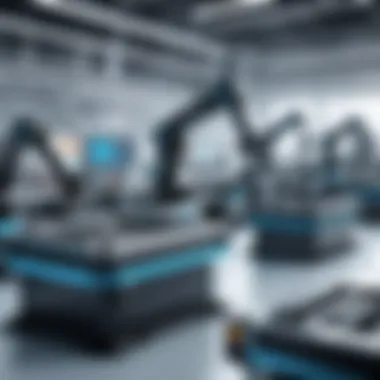

The adoption of robots in manufacturing has transformed various production processes. Industries benefit from increased output, reduced labor costs, and minimized human error. The versatility of robots allows them to perform a wide array of tasks while adapting to different production needs. Their integration significantly contributes to operational success within manufacturing settings.
Assembly Line Robots
Assembly line robots are designed to streamline production processes. These machines handle repetitive tasks with precision and speed, essential in environments where time and efficiency are paramount. One key characteristic of assembly line robots is their ability to work autonomously alongside human workers.
- Benefits of Assembly Line Robots:
- Reduced cycle times lead to higher production volumes.
- Consistency in product quality minimizes defects.
- Flexibility to reprogram for various tasks fosters adaptability.
Despite their many advantages, assembly line robots are not without challenges. Initial setup costs can be high, and training for operational staff is necessary. However, their overall contribution to manufacturing efficiency justifies the investment.
Robotic Welding
Robotic welding represents a pivotal advancement in automated welding processes. These systems enhance production capabilities through unparalleled precision and repeatability. The key characteristic of robotic welding is its ability to maintain high-quality welds across numerous products.
- Advantages of Robotic Welding:
- Increased welding speed reduces production time.
- Improved weld quality enhances product reliability.
- Minimized exposure to hazardous conditions improves worker safety.
One unique feature of robotic welding is its ability to operate in environments unsuitable for human workers, thus ensuring constant operation without fatigue. There are some limitations, including the need for skilled workers to program and maintain these machines. Nonetheless, the benefits greatly outweigh the drawbacks.
Quality Control Automation
Quality control automation involves deploying robots to conduct inspections and assessments during production. This automation guarantees product consistency while allowing human workers to concentrate on more complex tasks. A significant characteristic of quality control automation is its ability to precisely measure and evaluate product specifications in real time.
- Benefits of Quality Control Automation:
- Immediate feedback helps detect defects early.
- Data collection on production processes enhances future quality assurances.
- Decreased labor costs as fewer human inspectors are needed.
Despite the advantages, reliance on technology can lead to overconfidence in automation, necessitating continuous human oversight to ensure reliable operations. Nevertheless, quality control automation significantly enhances overall production standards, making it a popular choice in many factories.
Case Study: Automotive Industry
The automotive industry serves as an exemplary showcase of industrial robotics. Companies like Toyota and Ford have successfully integrated robotics into their production processes to achieve higher efficiency and sustainability. For instance, the use of assembly line robots has transformed how vehicles are manufactured.
In addition, these companies employ robotic welding extensively to ensure perfect fitment and durability in vehicle assembly. Quality control automation plays a crucial role by inspecting every vehicle to meet stringent safety standards.
The evidence indicates that the automotive industry's move towards robotics has led to lower operational costs and rapid production cycles, demonstrating the powerful impact of industrial robotics.
Healthcare Robotics
Healthcare robotics represents a critical intersection of technology and patient care. In today’s healthcare landscape, the integration of robotics enhances operational efficiencies, improves patient outcomes, and redefines traditional medical practices. This section aims to explore various dimensions of healthcare robotics, focusing on surgical robots and their roles in rehabilitation. These advancements not only bring enhanced precision but also significantly contribute to patient recovery processes.
Surgical Robots
Minimally Invasive Procedures
Minimally invasive procedures have emerged as a vital part of modern surgery. These techniques generally involve smaller incisions, which result in reduced trauma to the body. The primary characteristic of minimally invasive surgery is its ability to minimize recovery time for patients. This aspect is important as quicker recovery reduces hospital stays and associated healthcare costs.
One unique feature of minimally invasive procedures is the use of robotic systems like the da Vinci Surgical System. This system allows surgeons to perform complex surgeries with enhanced visualization and control. The advantages include reduced blood loss, less post-operative pain, and lower risk of infection. However, the challenges may involve higher costs associated with robotic surgical equipment and the need for specialized training for surgeons.
Precision and Accuracy in Surgery
Precision and accuracy play pivotal roles in surgical success. Robotic systems facilitate precise movements, translating a surgeon’s hand movements into smaller, accurate actions in the operative field. This characteristic is advantageous because it limits the potential for human error during vital procedures.
A distinct feature of precision surgery is the accuracy provided by robotic arms, which significantly enhances the surgeon's capabilities. The advantages are clear, with benefits including improved surgical outcomes, shorter procedures, and a decrease in complications. Yet, challenges exist in the form of substantial equipment costs and the requirement for ongoing training as technology evolves.
Robotic Assistance in Rehabilitation
The role of robotics in rehabilitation is growing. These systems are designed to assist patients recovering from surgery or injury. Such robotic systems can offer personalized therapy regimens, tracking progress over time. This offers clinicians valuable data to make informed decisions regarding treatment plans.
By utilizing robotic assistance, patients often experience improved motivation and engagement in their rehabilitation exercises. It allows for consistent therapy, which is crucial for recovery. However, the technology may not be affordable for all healthcare facilities, potentially limiting access for some patients.
By understanding the role of healthcare robotics, one appreciates how these innovations will shape the future of medical practices and patient care. As the field continues to evolve, stakeholders must consider both the benefits and challenges to effectively integrate these technologies into healthcare environments.
Consumer Robotics
Consumer robotics has become a significant focus in recent years, blending convenience and technology in everyday life. These robotic systems aim to enhance the quality of life for users by automating routine tasks, providing educational experiences, and improving efficiency. The growth of consumer robotics can be attributed to advancements in technology and a rising interest in smart devices. By understanding this sector, we can appreciate how robotics play an essential role in transforming domestic life and learning.
Robotic Vacuum Cleaners
Robotic vacuum cleaners have gained immense popularity due to their ability to automate household chores. These devices offer a user-friendly solution for maintaining clean floors with minimal effort. They employ sensors and mapping technology to navigate and clean floors efficiently. Moreover, brands like iRobot Roomba and Ecovacs Deebot have led the market by providing advanced features such as app connectivity and scheduling capabilities.
The advantages of robotic vacuum cleaners include time savings and consistent cleaning routines. Many users appreciate the ability to focus on more important tasks while the robot takes care of the cleaning. However, challenges exist, such as battery life and effectiveness on uneven surfaces. Overall, they have proven to be valuable tools in modern homes.
Educational Robots
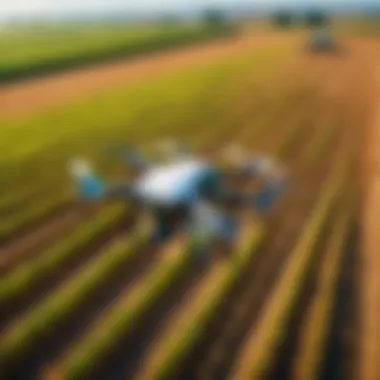
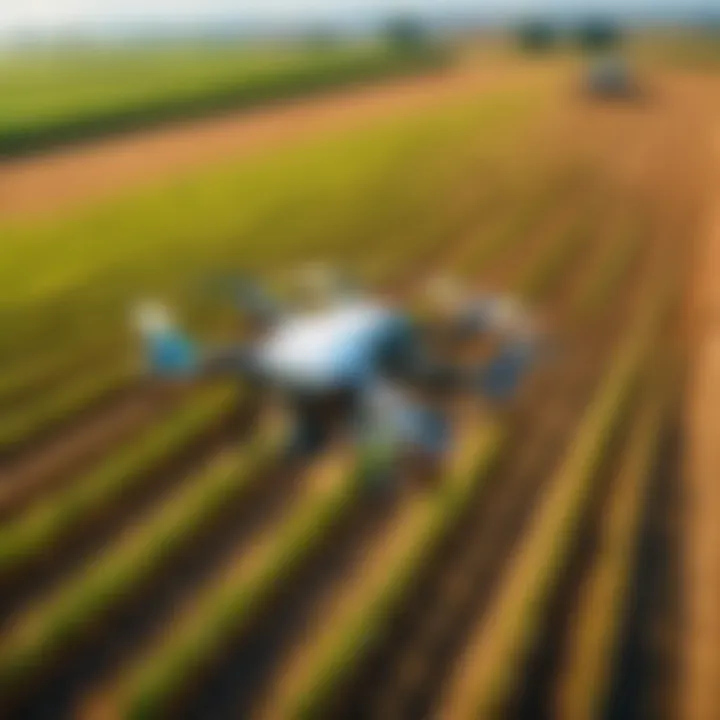
Educational robots represent an important segment of consumer robotics, aimed at providing hands-on learning experiences. They assist in developing essential skills like programming, problem-solving, and critical thinking. Educational robots come in various forms, from basic kits for young learners to advanced programming platforms for more experienced users.
STEM Learning Tools
STEM learning tools empower students by offering interactive ways to engage with science, technology, engineering, and mathematics concepts. These tools are designed to make learning both effective and enjoyable. For instance, products like LEGO Mindstorms and VEX Robotics encourage creativity and team collaboration, appealing particularly to schools and parents.
The key characteristic of STEM learning tools is their blend of education and play, making them popular among educators. They foster an environment where students can experiment and create using robotics. However, the cost of some kits can be a barrier, limiting access for some users. Nevertheless, the educational benefits often justify the investment, making them a beneficial choice for enhancing learning experiences.
Programming and Engagement
Programming and engagement tools have revolutionized how children interact with technology. By introducing basic programming concepts through robotics, these tools prepare learners for a technology-driven future. Engaging with robotics allows students to see the tangible results of their programming efforts.
An important characteristic of programming tools in robotics is the emphasis on user-friendly interfaces. For example, platforms such as Scratch help users understand coding through visual programming. This ease of use makes programming more accessible and appealing.
While these tools provide significant advantages, there can be occasional frustrations with the learning curve associated with advanced programming concepts. However, the rewards in terms of skill development often outweigh the challenges. In summary, programming and engagement tools play a crucial role in promoting interest and skills in technology among young learners.
Agricultural Robotics
Agricultural robotics represents a crucial advancement in the field of automation and technology application in farming. As global food demands steadily increase, the pressure on farmers to optimize yields while minimizing costs has never been greater. Robotics in agriculture addresses both of these challenges by enhancing efficiency, improving crop management, and increasing productivity. It enables farmers to make data-driven decisions, ultimately leading to sustainable farming practices. The integration of robotics technology transforms labor-intensive tasks, allowing human operators to focus on more strategic responsibilities.
Autonomous Tractors
Autonomous tractors are a promising development within agricultural robotics. Their design allows for operation without the need for direct human intervention. This technology uses GPS systems and sensors to navigate fields autonomously. Key benefits include reduced labor costs and the ability to work for extended hours, improving productivity. Additionally, by providing consistent operations, these tractors help minimize field compaction and soil disruption. However, the cost of implementing such technology can be high, which may be a barrier for small-scale farmers.
Drones in Agriculture
Drones are increasingly being utilized in agriculture. They serve multiple functions that significantly improve farming practices. Key applications include monitoring crop health, assessing soil conditions, and even aiding in irrigation management.
Crops Monitoring
Crops monitoring through drones involves capturing high-resolution images over large areas. This approach enables farmers to observe plant health and identify stress before it becomes critical. The unique feature of this practice is its speed and efficiency. Using drones can cover difficult-to-access areas much faster than traditional methods, providing timely information for precise interventions. Despite its popularity, potential disadvantages include regulatory constraints and the initial investment for equipment and training.
Precision Farming
Precision farming focuses on optimizing field variability in crops. Drones can facilitate this by collecting data on field conditions, which can then be analyzed for better crop management. A standout benefit is that this approach promotes the efficient use of resources, such as water and fertilizers, leading to environmentally friendly practices. However, it requires a certain level of expertise to interpret the data accurately, which may create a learning curve for some farmers.
"The integration of robotics allows for smarter resource use, aiding farmers in meeting the challenges of climate change and market demands."
Military and Defense Robotics
Military and defense robotics play a crucial role in modern warfare and security operations. The integration of robotics in these fields enhances operational capabilities while minimizing human risk. As global conflicts evolve, robotics provide nations with advanced tools for surveillance, logistics, and combat. Essential aspects lie in their efficiency, precision, and versatility. This section delves into two major domains: Unmanned Aerial Vehicles (UAVs) and ground robots for surveillance. Examining these elements illuminates their significance in defense strategy and presents comprehensive insights into their functions.
Unmanned Aerial Vehicles (UAVs)
Unmanned Aerial Vehicles, commonly referred to as drones, have transformed military operations. UAVs are remotely piloted or autonomous aircraft that play varied roles, from reconnaissance to combat support. One key benefit is their ability to gather intelligence without endangering personnel. Additionally, they enable real-time data collection, crucial for informed decision-making in dynamic environments.
UAVs operate in multiple capacities:
- Surveillance: They monitor enemy movements, analyze landscapes, and track targets effectively.
- Combat Engagement: Armed UAVs can conduct strikes against hostile targets, minimizing collateral damage.
- Logistics Support: UAVs transport supplies to remote locations, enhancing operational readiness.
However, the deployment of UAVs raises ethical and legal questions. Concerns include potential misuse, accountability for decisions made by AI systems, and impacts on civilian lives. Ensuring responsible use is paramount.
"The increasing reliance on UAVs in military strategies necessitates a careful balance between technological advancement and ethical governance."
Ground Robots for Surveillance
Ground robots are another significant advancement in military and defense operations. These robots can operate in hazardous environments, reducing human exposure to danger. Their primary function is surveillance, yet they also contribute to other critical tasks.
Some functions of ground robots include:
- Terrain Analysis: Equipped with sensors, they assess the geographical attributes of conflict zones, aiding tactical planning.
- Reconnaissance Missions: Ground robots can infiltrate enemy lines to gather intelligence quietly.
- Explosive Ordnance Disposal: They handle dangerous materials safely, neutralizing threats without human intervention.
Given their diverse roles, the technical proficiency of ground robots is essential. They require advanced programming and real-time processing capabilities to adapt to rapidly changing situations. Moreover, collaboration between ground robots and UAVs can enhance situational awareness, creating a comprehensive surveillance network.
Robotics in Humanitarian Efforts
Robotics in humanitarian efforts represents a critical intersection of technology and social good. The applications of robotics are growing in importance, especially when emergencies arise. These technologies provide efficient, effective, and safe solutions when traditional methods may prove insufficient or too dangerous. An understanding of the capabilities of robotics in these contexts is essential for decision-makers and organizations operating in crisis situations.
Disaster Response Robots
Disaster response robots play a pivotal role during emergencies such as earthquakes, floods, and other large-scale incidents. They are designed to operate in environments that may be hazardous for human responders. Such robots can conduct search and rescue missions, assess structural damages, and deliver supplies. Their ability to navigate wreckage can significantly increase the chances of locating and assisting survivors.
Some notable examples include:
- Bomb disposal robots like the iRobot 510 PackBot, capable of navigating hazardous materials.
- Search robots equipped with cameras and sensors for exploration and identification of victims.
- Drones specifically designed to survey affected areas from above, relaying real-time data to ground teams.
These robots often utilize advanced sensors and artificial intelligence to function autonomously or semi-autonomously, which can drastically reduce the time needed for initial assessments.
Moreover, deploying robots minimizes the risk to human life during perilous operations, thus reshaping the operational framework of humanitarian responses.
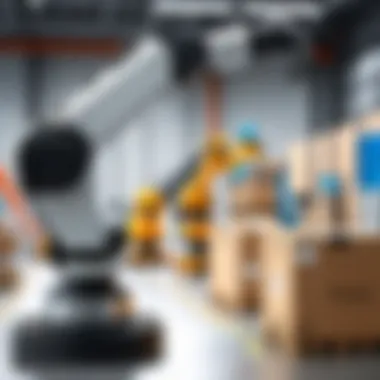
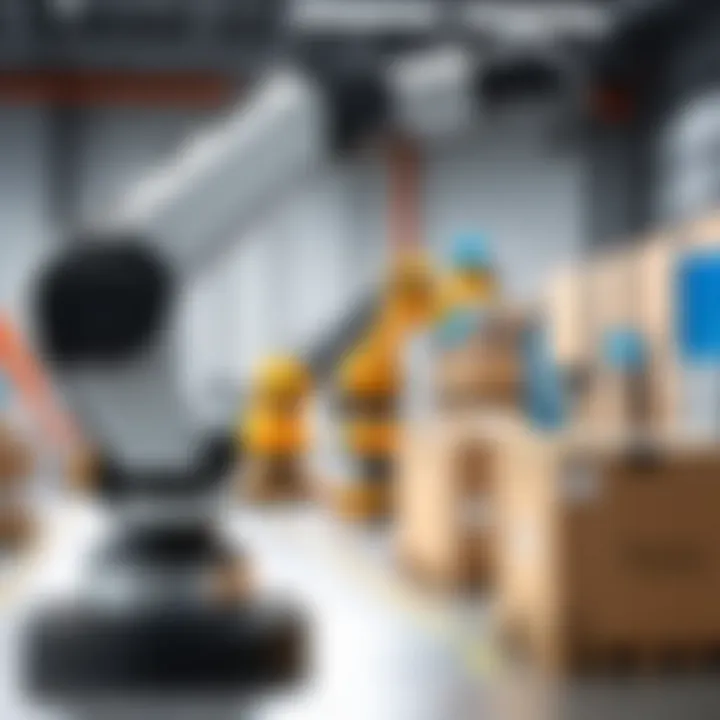
Robots in Search and Recovery Operations
Search and recovery operations are essential after a disaster strikes. Here, robotics offer distinct advantages. For instance, robots can traverse challenging terrains where humans face severe limitations. Ground-based robots can maneuver through debris, while aerial drones provide a bird's eye view of large areas.
Key benefits include:
- Efficiency: Robots can cover large areas quickly and effectively, often outperforming human teams that must navigate treacherous conditions.
- Data collection: Equipped with thermal imaging and IR sensors, these robots can detect body heat, thereby increasing the likelihood of finding survivors.
- Continuous operation: Unlike humans, robots can work non-stop, maintaining high levels of performance without fatigue.
Reliability in robot performance is crucial during the search and recovery phase. Resilient materials and redundant systems ensure their functionality even under strain. Despite their advantages, human oversight remains vital to enhance decision-making processes and ensure ethical considerations are met during these operations.
"The integration of robotics in humanitarian efforts enhances the capability to respond swiftly and efficiently to disasters while safeguarding human life."
Challenges and Limitations of Robotics
The topic of challenges and limitations in robotics is crucial for understanding how these technologies can be effectively integrated into various sectors. While robotics offers numerous benefits, such as efficiency and precision, it also presents specific issues. Decision-makers, IT professionals, and entrepreneurs must consider these aspects before implementing robotics in their operations. Addressing challenges can lead to better outcomes, while recognizing limitations aids in setting realistic expectations for automation capabilities.
Technical Limitations
Robots possess remarkable technical abilities, but they are not without their shortcomings. The first challenge is the sophistication of programming. Creating software that allows robots to understand complex tasks and environments is intricate. For example, robots used in healthcare may struggle with unpredictable human behaviors, making it hard for them to respond appropriately in emergencies.
Another issue lies in the realm of sensors and perception. Robots depend on sensors to interact with their environment. These sensors can be limited in their accuracy or range. A robot in an assembly line may not detect a defective part if its sensors are poorly calibrated. Such problems can affect productivity and safety.
Additionally, hardware constraints can impede performance. While machines can be built to withstand harsh conditions, the cost of robust materials often results in limited deployment. For instance, drones have become popular in agriculture, but their operating time is usually constrained by battery life.
Ethical Considerations
As robotics becomes more prevalent, ethical implications also arise. One primary concern is the risk of job displacement. As companies adopt automated solutions, there is a substantial risk that employees might lose their jobs. For instance, factory workers may see their roles diminishing in favor of robots that can perform repetitive tasks more efficiently. This situation prompts discussions about retraining and reskilling the workforce.
Another critical ethical issue is data privacy. Many robotic systems rely on data gathering for functionality. APIs [Application Programming Interfaces] often track user data. For instance, healthcare robots may capture sensitive patient information, raising concerns about confidentiality and consent. Companies must remain vigilant to protect user data while complying with privacy regulations.
Finally, the decision-making process of autonomous systems poses ethical dilemmas. Machines making critical decisions can lead to consequences not fully understood. Autonomous vehicles navigating traffic scenarios, for example, must sometimes make life-or-death decisions. Who is liable if a robot makes a mistake? Understanding these ethical considerations is essential for integrating robotics into society responsibly.
The integration of robotics must balance innovation with responsibility, ensuring that advancements contribute positively without compromising ethical standards.
Overall, acknowledging these technical limitations and ethical concerns is vital. They must be considered to harness the full potential of robotics while minimizing adverse effects.
Future Trends in Robotics
As technology continues to advance at an unprecedented pace, the field of robotics is not left behind. Future trends in robotics are becoming increasingly relevant for industries around the world. Decision-makers must grasp the implications of these trends. Understanding them will help organizations optimize processes, improve outcomes, and maintain competitiveness.
One of the most significant trends is the integration of artificial intelligence (AI) in robotics. AI enhances robots' capabilities, allowing them to learn from experiences and adapt to different environments. This evolution will not only improve efficiency but also expand the areas where robots can be deployed. The collaboration between humans and robots is also important in shaping workflows and processes in various sectors.
"The intersection of AI and robotics represents a new frontier, ripe with possibilities that can redefine operational norms across industries."
Additionally, the growth of collaborative robots, commonly known as cobots, signals a shift in how automation is approached. Cobots are designed to work alongside human workers, enhancing productivity while ensuring safety. These trends indicate a future where robotics will be more integrated into daily operations than ever.
AI Integration in Robotics
AI integration is transforming robotics. This merger allows robots to execute complex tasks that were previously too difficult or dangerous for automation. Machine learning algorithms enable robots to process information similarly to humans. They can now analyze data, recognize patterns, and make decisions in real-time. This capability has vast implications for fields like manufacturing, logistics, and healthcare. Companies like Boston Dynamics are pioneering in developing robots that can navigate complex environments without human intervention.
Factors contributing to the importance of AI in robotics include:
- Improved Adaptability: Robots can operate in dynamic settings, learning from their surroundings.
- Enhanced Data Processing: Robots analyze vast amounts of data that humans cannot.
- Cost Efficiency: Automation reduces labor costs and increases precision.
Organizations should evaluate their readiness to adopt AI-powered robotics. They must consider the costs associated with implementation versus potential gains. Adding AI also necessitates addressing ethical concerns regarding job displacement and privacy.
Collaborative Robots (Cobots)
Cobots are reshaping the paradigm of human-robot interaction. Unlike traditional industrial robots, cobots are designed to collaborate safely with human operators. They are equipped with sensors and advanced safety features, which enable them to operate in close proximity to people without dangerous barriers. This opens up new avenues for productivity and efficiency.
Key advantages of cobots include:
- Flexibility: Cobots easily adapt to various tasks and work environments.
- Ease of Use: Many cobots come with user-friendly interfaces, allowing quick deployment and training.
- Increased Safety: Enhanced safety features allow for automated operations without compromising worker safety.
For instance, Universal Robots specializes in developing cobots widely used across various sectors such as assembly and packaging. As these technologies evolve, the distinctions between robotic and human labor may blur, necessitating new frameworks for workforce integration. Organizations must think carefully about training staff to work alongside these robots, ensuring that human capital is maximized while leveraging automation.
Culmination
The significance of the conclusion in this discourse on robotics cannot be understated. It encapsulates the journey through various sectors where robotics has made substantial inroads, highlighting not only the transformative impact but also the ongoing challenges that the industry faces. This article has explored multifaceted facets of robotics, from healthcare innovations to applications in agriculture and humanitarian efforts. By synthesizing these themes, we gain insights into how robotics is not just a technical advancement but a societal shift.
The Ongoing Evolution of Robotics
Robotics is continually evolving, influenced by advancements in technology and changing societal needs. The integration of Artificial Intelligence in robotic systems has marked a pivotal change. It allows robots to learn from their environment, adapt in real-time, and perform complex tasks with increased autonomy. This evolution is not merely technical; it is also ethical. The conversations surrounding the implications of robotics in employment and privacy are crucial.
As robotics matures, new domains such as exoskeletons for physical rehabilitation and drone technology for precision farming are becoming prevalent. These applications demonstrate the adaptability of robots in various fields, signifying a shift towards more personalized and efficient services.
Moreover, collaborative robots, or cobots, emphasize a future where humans and machines work together, enhancing productivity without replacing human labor. The road ahead presents a blend of opportunities and obstacles, necessitating careful consideration by both decision-makers and investors.
Final Thoughts
As our exploration concludes, it is evident that the integration of robotics into various industries presents both profound benefits and notable challenges. Engaging with these issues is essential for stakeholders to navigate the complexities of implementing robotic systems effectively. The initial investment may be high, but the long-term efficiency gains and quality improvements are noteworthy.
"The future of robotics is not about replacing humans but augmenting our capabilities and enhancing our quality of life."
In summary, the trajectory of robotics suggests a comprehensive outlook toward increased efficiency, safety, and productivity across multiple sectors. Decision-makers must remain proactive, embracing innovation while addressing ethical concerns, ensuring the technology serves as a tool for societal advancement. The next steps involve nurturing a collaborative spirit between humans and robots, redefining the essence of work itself.





